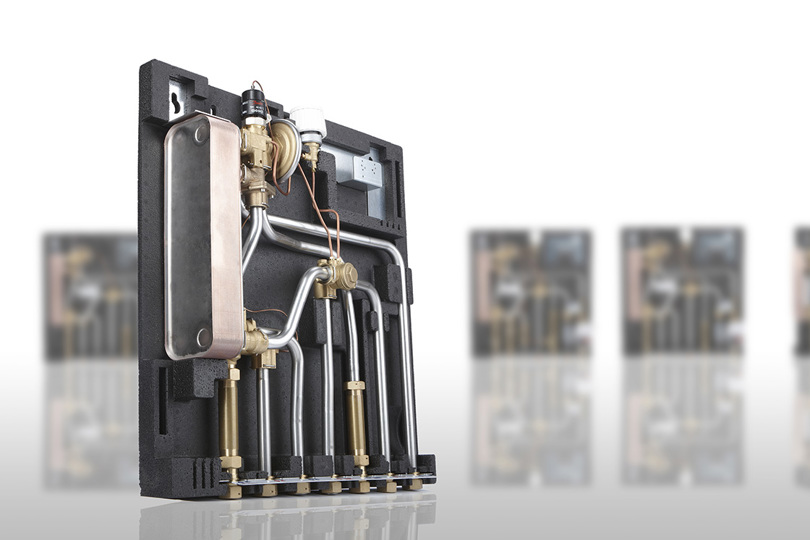Flat stations are decentralized heating systems installed in flats and apartments in order to provide heating and hot water on demand to end-users.
Direct heating and domestic hot water substations have no heat exchanger separating the primary flow from the secondary flow. Therefore, the supply from the network or the central oil/gas boiler will flow directly into the network in each flat.
Direct heating substations are recommended for maximum PN10 or PN6 networks.
Flat stations for direct heating with mixing loop and domestic hot water
The supply from the network will flow directly into the network in the building. A mixing loop on the heating side gives the possibility to control the supply temperature for the housing installation in the substation. Direct substations are recommended for maximum PN10 or PN6 networks.
Distribution systems - floor heating for flat stations
Prefabricated systems for floor heating as well as for warm and cold water. The systems can be installed separately or directly connected to the Danfoss flat station range, in connection with a boiler or as an extension of an existing heating system. The distribution units are available as built-in variants with a recess box as an option or as wall-mounted variants with a cover as an option.
Features and benefits
Cost-effective solution for new installations, refurbishment and renovation projects with low service and maintenance costs when in use.
Quick and easy installation.
Less space used and can be built into walls, stairwells or shafts.
Energy metering and consumption monitoring with energy meter.

Featured product: EvoFlat
The modern replacement for traditional centralized heating and domestic hot water solutions
Product range
-
if (isSmallPicture) {


 EvoFlat
EvoFlatThe EvoFlat application is a complete heat transfer solution for apartment heating and domestic hot water that provides superb user comfort and an exceptional return on investment for building owners.
Documents
| Type | Name | Language | Valid for | Updated | Download | File type |
|---|---|---|---|---|---|---|
| Brochure | Specifying the right district heating substation makes commercial sense | Slovenian | Slovenia | 21 Jul, 2015 | 5.2 MB | |
| Brochure | Specifying the right district heating substation makes commercial sense | Croatian | Croatia | 06 Aug, 2015 | 2.5 MB | |
| Brochure | Specifying the right district heating substation makes commercial sense | Slovak | Slovakia | 21 Jul, 2015 | 2.4 MB | |
| Brochure | Specifying the right district heating substation makes commercial sense | Ukrainian | Ukraine | 18 Sep, 2015 | 2.2 MB | |
| Brochure | Specifying the right district heating substation makes commercial sense | Bulgarian | Bulgaria | 31 Jul, 2015 | 11.3 MB | |
| Brochure | Specifying the right district heating substation makes commercial sense | Romanian, Moldavian, Moldovan | Romania | 29 Aug, 2015 | 2.3 MB | |
| Brochure | Specifying the right district heating substation makes commercial sense | English | Multiple | 05 Mar, 2015 | 2.4 MB | |
| Brochure | Specifying the right district heating substation makes commercial sense | German | Multiple | 16 Mar, 2020 | 3.1 MB |




